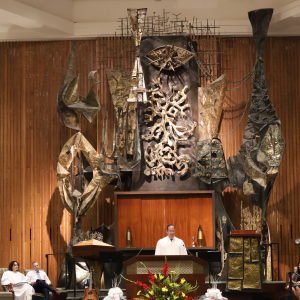A tree and its branches symbolize tribe’s exile
Published July 23, 2008
Matot in the opening verse [Numbers 30:2]: rashei ha-matot, the heads of the tribes. Two words for tribes in our poem — this one matei (singular) mattot (plural), and shevet.
Both words signify a branch, a staff, part of a tree. How a branch becomes a tribe — I am thinking about that as I kiss the ground, hug a tree.
ADVERTISEMENT
A staff, a stick, an emblem, a totem, the tribal stick.
Tree constituted by its branches, branch separated from the tree as in exile — the problem of separation and exile implied in the notion of tribe.
All branches as separated from the tree of life, the staff, the branch, the tribe — what does the branch, the stick owe to the tree? What do all trees supply to the branch, the stick?
Something else: Soft, moist the shevet, dried out, inflexible the matei. The soul’s journey out from God — the exile of the partial from the whole — Israel among the nations, me from myself, the soul soft and moist to its divine origins like the shevet or the soul inflexible and brittle, souls dried out and cut off from divine moistness like the matei.
So too souls in motion — a connection with the Source or a sense of inflexible to our origins, dried out, tribes either softened to the tree or broken and brittle, cut off from the tree of life, separated.
Turn all mattot into shevatim, turn all brittleness to moistness, turn the inflexibility of separation into moistness of relation with the Source, bring us into relation, make us moist, turn us all into shevatim, damp with the Source.
Rabbi James Stone Goodman of Congregation Neve Shalom is a member of the St. Louis Rabbinical Association.














